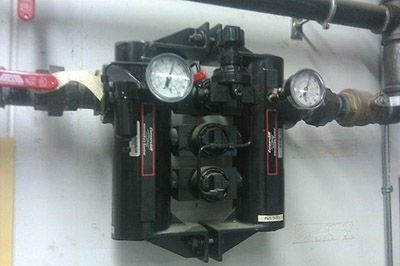
One of many energy conservation measures available to industrial users is the use of pressure/flow control regulators. These are installed in systems to reduce the plant pressure while leaving the air compressors to operate within a wide pressure band, making them more efficient.
A compressed air pressure/flow controller is a device used to regulate and control the pressure and flow of compressed air in various industrial and manufacturing processes. Controlling the compressor at the lowest acceptable pressure reduces the flow into the plant because all unregulated uses consume about 1% less flow for every 1 psi in pressure reduction.

The most sophisticated of these devices control the pressure electronically using PID control to within one psi of setpoint, but these require a significant investment. Some PFCs are available at a more reasonable cost that use precision regulators under pilot regulator control (Fig. 1) or simply precision regulators (Fig. 2) and these can give excellent results if the flow controller is good quality. But the controllers shown in this article have one thing in common. They are all not working correctly, either bypassed or adjusted to simply track the compressor discharge pressure. There are thousands of similar PFCs out there in the same condition and usually the reason for failure is lack of understanding.
If you happen to have one of these devices, you should check and see if it is actually regulating by looking at the inlet and outlet pressure gauges. If not regulating, go back and read the instruction manual. There will be likely a savings benefit if you can return the PFC into service.
For example, a 500 cfm flow at 120 psi would cost about $87,000 to operate on a well-controlled system. Reducing the pressure by 20 psi might reduce the flow by 10% (about 50% of industrial plant load is unregulated) saving $8,700 per year in energy. Not bad for a twist of a setting dial!
When looking to optimize pressure/flow controllers should be considered as one valuable tool, if they are working correctly.
More information on the use of these devices can be found in Compressed Air Challengetraining: www.compressedairchallenge.org/calendar.
Filed Under: Components Oil Coolers, Compressed Air Technologies, Pneumatic Tips